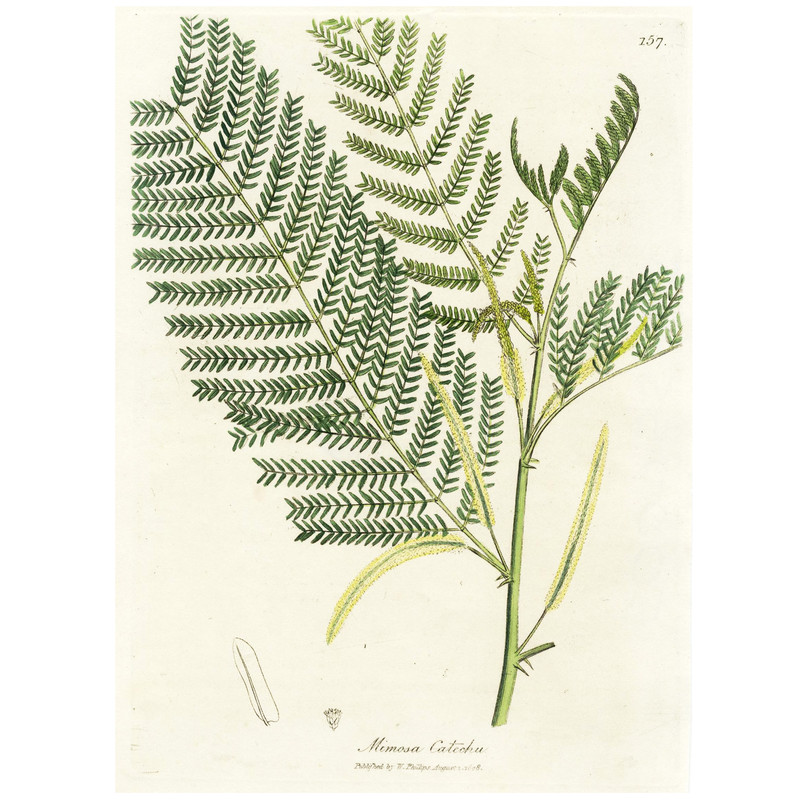1808 WOODVILLE'S MEDICAL BOTANY, Hand-Colored Engraving, MIMOSA CATECHU * Beautiful Botanical Art

The Volumes:
'MEDICAL BOTANY' published between 1790 and 1794 with 300 illustrations of medicinal plants by James Sowerby was an important reference work for physicians in the nineteenth century with a second edition in 1810 followed by a revision in 1832 by William Jackson Hooker and George Spratt.
The Author:
William Woodville (1752 – 1805) was an English physician and botanist. Convinced by the work of Edward Jenner, he was among the first to promote vaccination.
The Artist:
James Sowerby (1757 – 1822) was an English naturalist, illustrator and mineralogist. Contributions to published works, such as A Specimen of the Botany of New Holland or English Botany, include his detailed and appealing plates.
In 1790, he began the first of several huge projects: a 36-volume work, English Botany that was published over the next 23 years, contained 2,592 hand-coloured engravings and became known as Sowerby's Botany. An enormous number of plants were to receive their first formal publication within this work.
The Plates & Technique:
Line-engraving or Copperplate engraving is a highly exacting & labor-intensive process for intaglio printmaking.
The original drawing is cut into the surface of a copper or steel plate with a hand-held sharp steel point or burin, with shading created by many fine cut lines, or hatching. Before printing takes place, the plate is heated, covered with ink. The warm ink seeps into the finest of depressions and fills the lines and textures of the drawing. The rest of the plate is cleaned off. The copper plate is now pressed with a printing press on to moistened paper which soaks up the ink from the depressions in the plate. The copperplate-engraving technique is very exacting, time-consuming and exhausting for the engraver, who needs a lot of strength for it.
Every part of these prints was made by hand: Hand drawn & engraved on Copper or steel which was hand-mined, smelted & rolled, printed onto usually handmade cotton rag paper, inked & colored with hand-ground pigments individually by hand, & they were usually hand sewn into handmade leather-bound books.
Condition:
Appears to be in excellent condition for centuries-old engravings. The hand-coloring appears sharp & brilliant. Typical slight age-toning & antiquarian character. An exceptionally clean plate as these go. Please peruse the detailed photos.
These prints are very old & may have minor imperfections expected with age, such as some typical age-toning of the paper, oxidation of the old original watercolors, spots, text-offsetting, artifacts from having been bound into a book, etc. Please examine the photos & details carefully.
Size: 9-1/2 x 6-1/2 inches approximately.
Text Page(s):
This one comes without original page(s) of text. Included in the images are scans of a title page & frontispiece from one of the volumes for reference (not part of the listing).







